Dana Porter Library, first floor
University of Waterloo Library
Waterloo, Ontario N2L 3G1
519-888-4567 x42619 or x42445
Everyone is interested in reading about their country’s past or coming across some old photographs of how their city looked like back in the day. For me, anything I find that relates to my country (I’m Lebanese) or to any country in the Arab region makes me feel proud of my cultural background. When I started working in the Special Collections & Archives department, I thought it would be the perfect opportunity for me to search for any material on Arab history. And luckily, I did.
I first found a book titled “Palestine and Syria” written by Karl Gröber, and just by reading those three words, it got me excited to read every single page ahead. The book begins with brief historical descriptions of Palestine, Syria, and Mesopotamia, and each have their respective maps from the early 20th century. The book is more of an album, since the majority of it is photographs of Old Jerusalem, Syria, Lebanon, and Jordan.
The religion of Islam is mentioned as having an impact on the overall region of Jerusalem, and that is clearly demonstrated through the photographs taken of the Dome of the Rock, representative of the beautiful Islamic art and architecture both outside and inside the mosque.
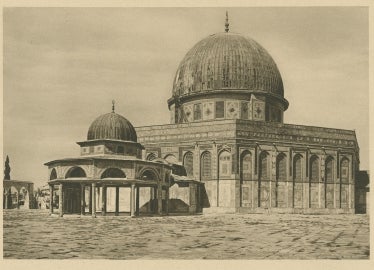
Dome of the Rock (on the right) and Dome of the Chain (on the left), located in the Old City of Jerusalem.
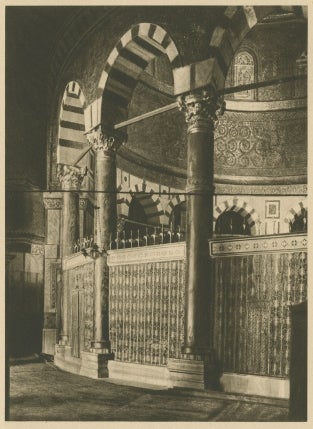
Interior of the Dome of the Rock.
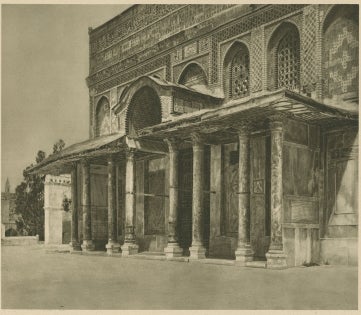
Portal of the Dome of the Rock.
Flea markets and exchange constituted a vital component of the daily life in old Arab societies. The photographs below are a snapshot of the street markets, perfectly capturing the traditional clothing and the market's environment and structure.
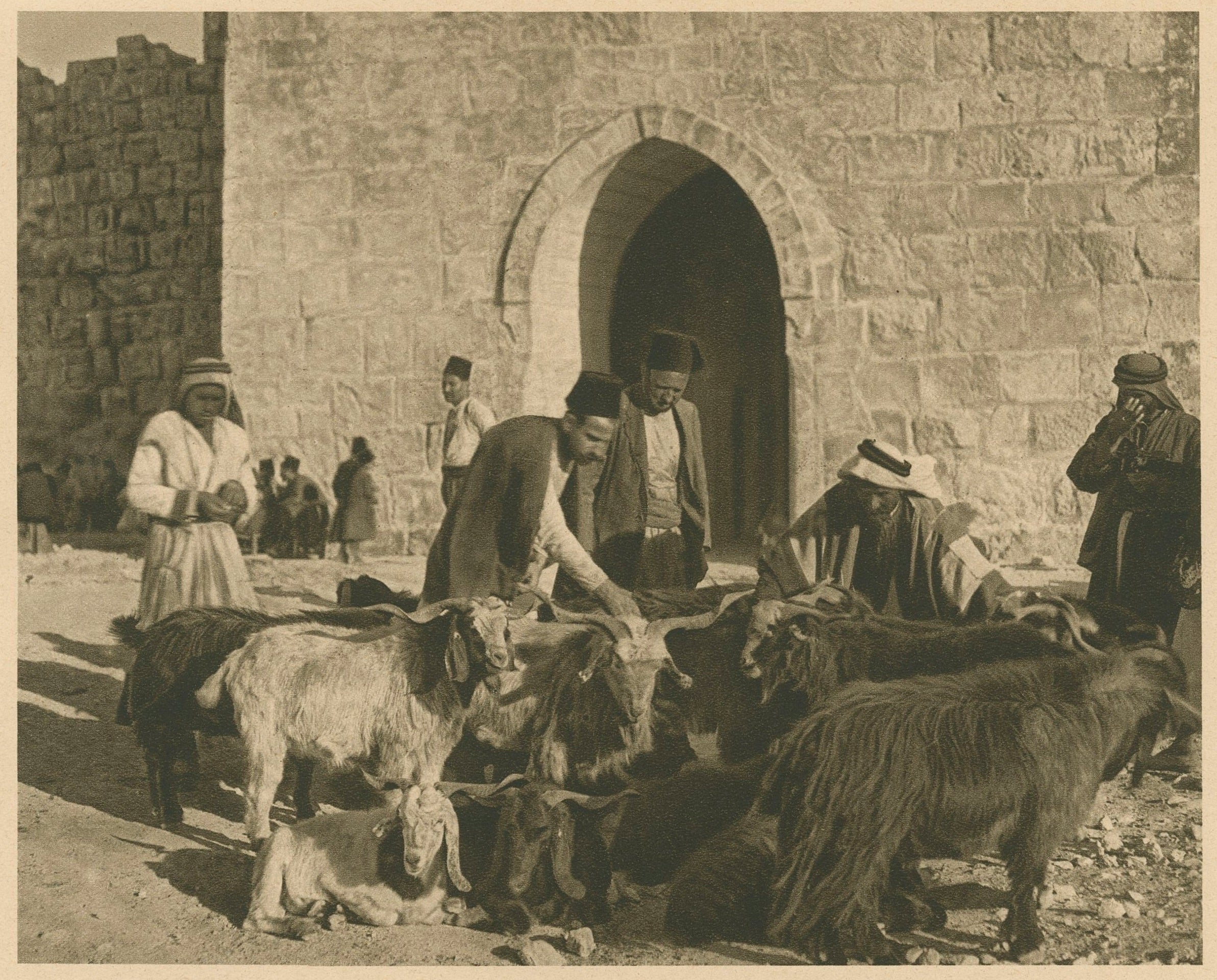
Market scene at the gate of Herod, Jerusalem.
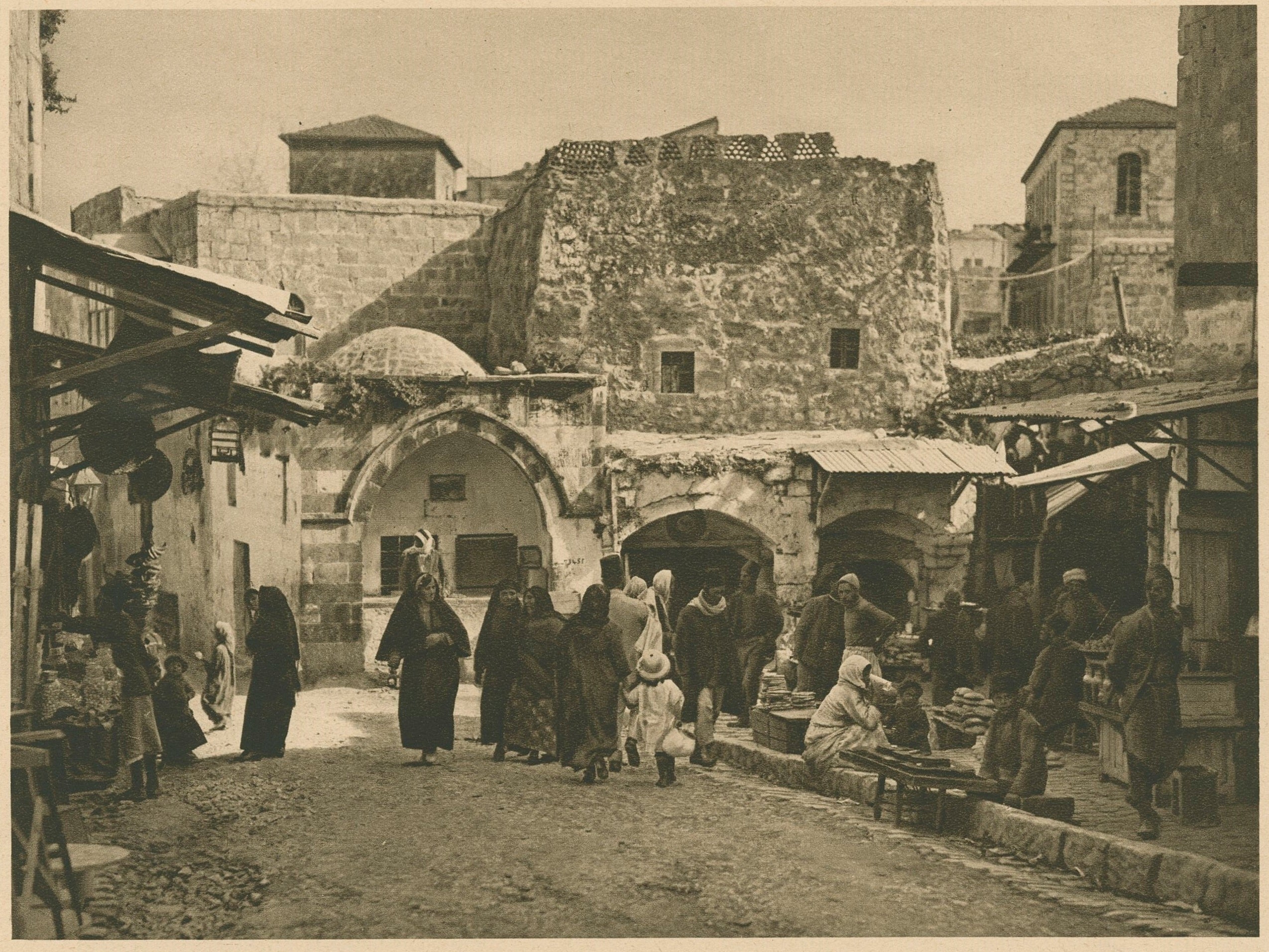
Street scene in Jerusalem.
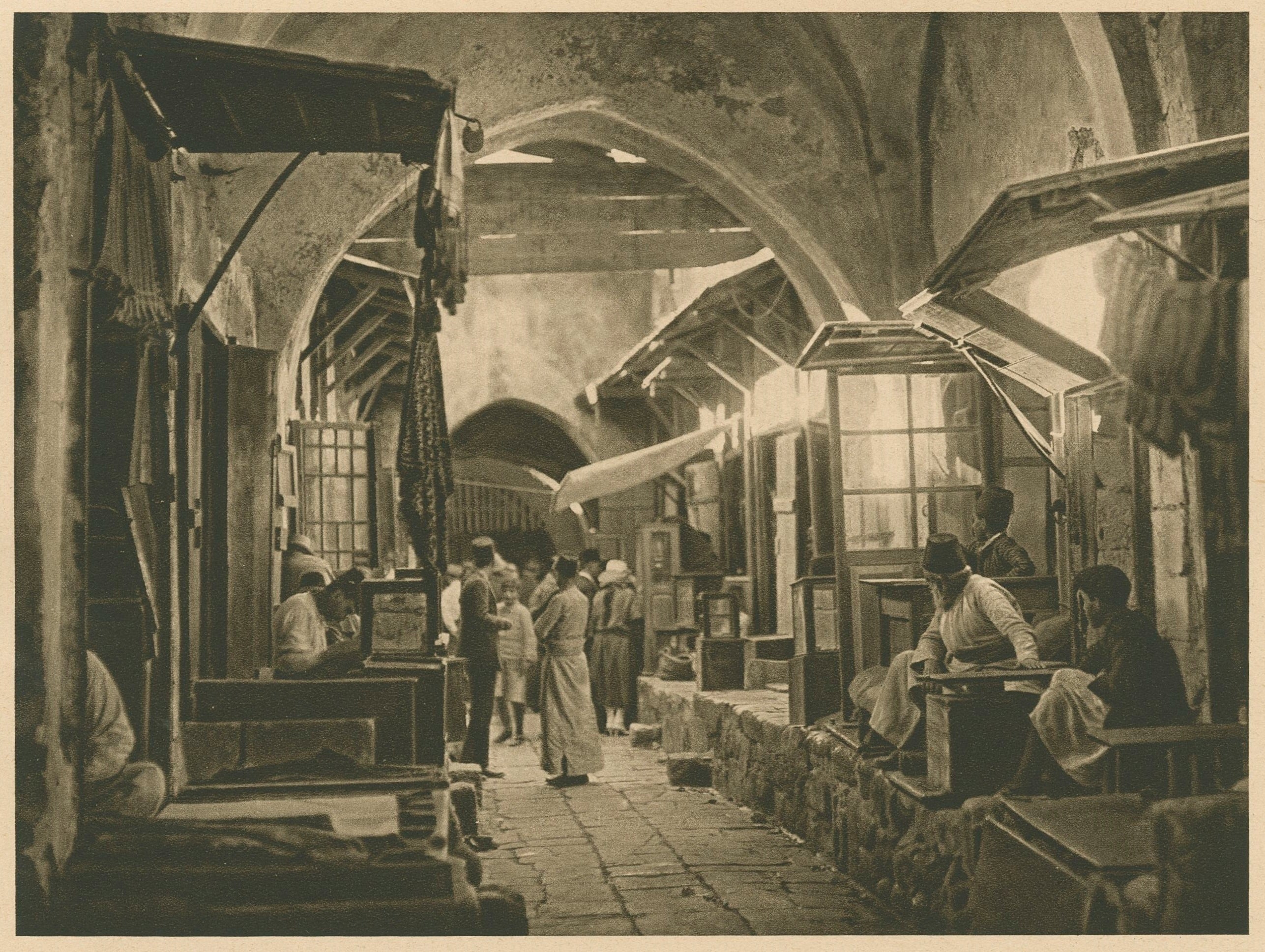
Bazaar in Jerusalem.
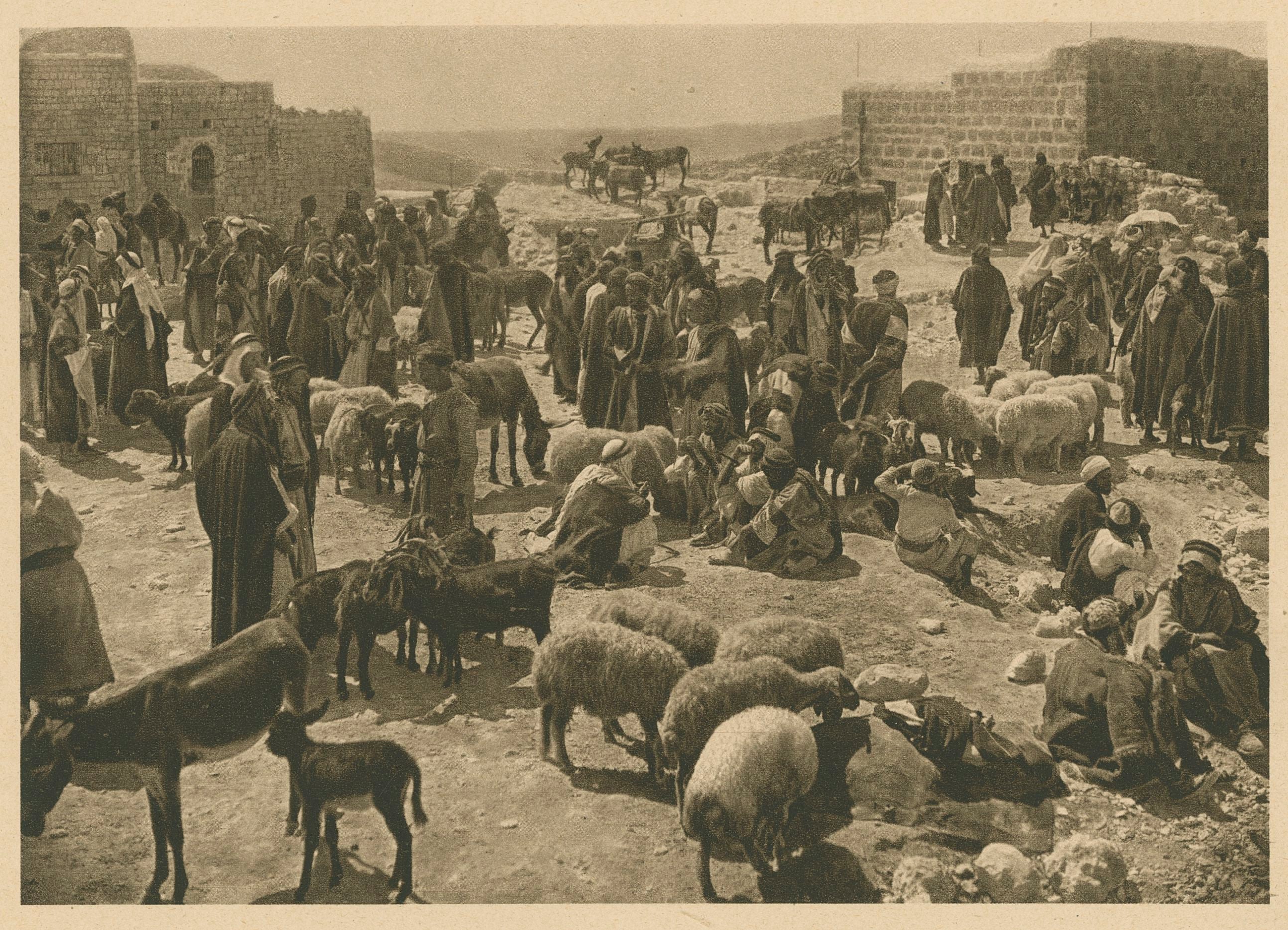
Market scene in Jerusalem.
Taking a closer look at traditional clothing, there is a noticeable difference between the two Palestinian costumes in the photos below, the reason being that they are customary of the different cities, where each city had its own unique style of designing clothes. These costumes are originally from the 19th and early 20th centuries and were particularly worn by the fellaheen (Arabic term for village women). Their design was influenced by various empires that previously ruled Palestine, like the Egyptian, Roman, and Byzantine empires. Until the 1940s, the traditional Palestinian costume reflected a woman's economic and marital status and was determined by her town of origin, and that was identifiable from the fabric used, the colours, the costume's cut, and embroidery motifs.1
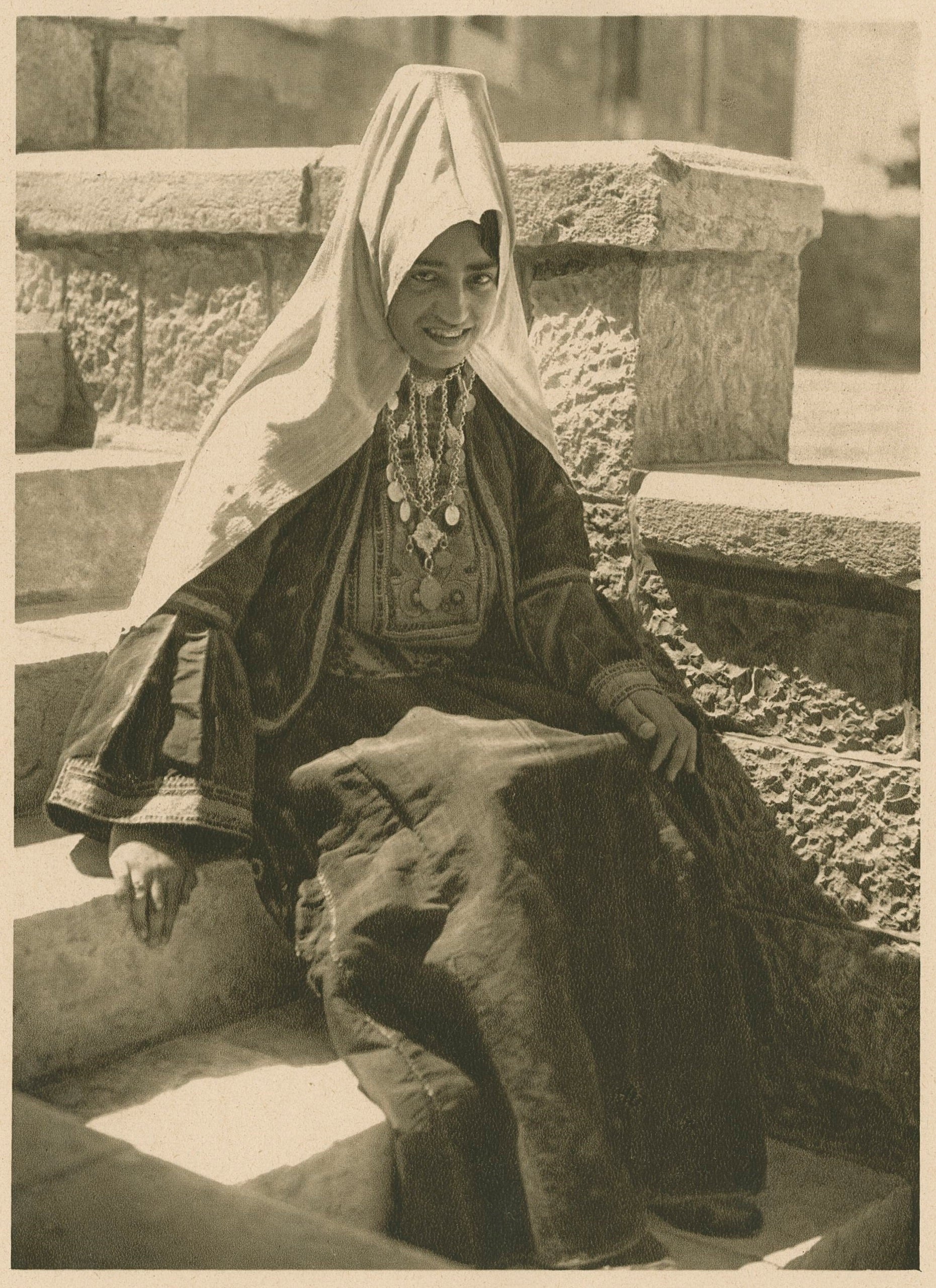
Woman from Bethlehem (city located in the South of Jerusalem).
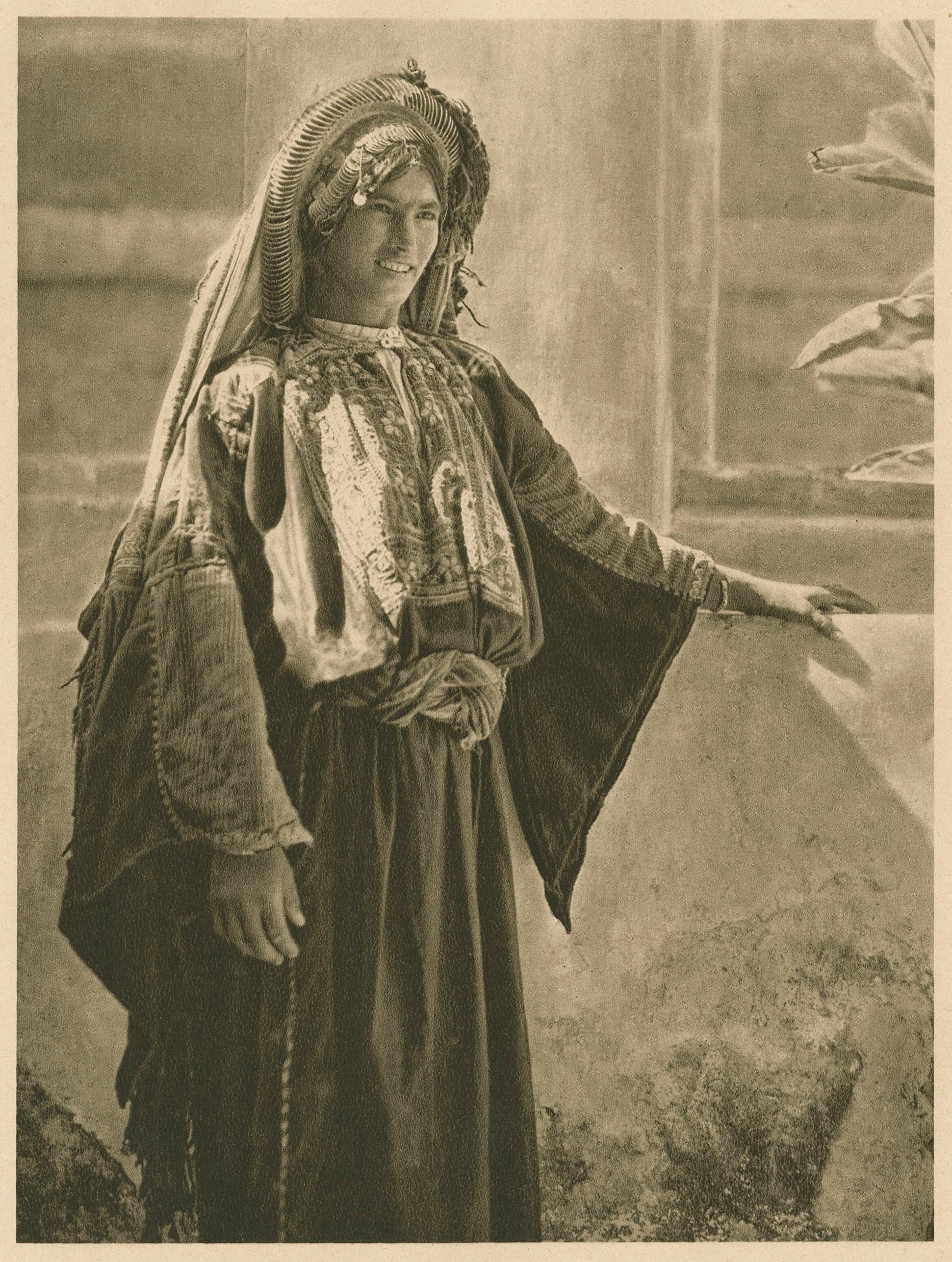
Woman from Râmallah (city located in the North of Jerusalem).
Aside from the city life, there is also the varied and captivating natural scenery many Arab countries are well-known for.
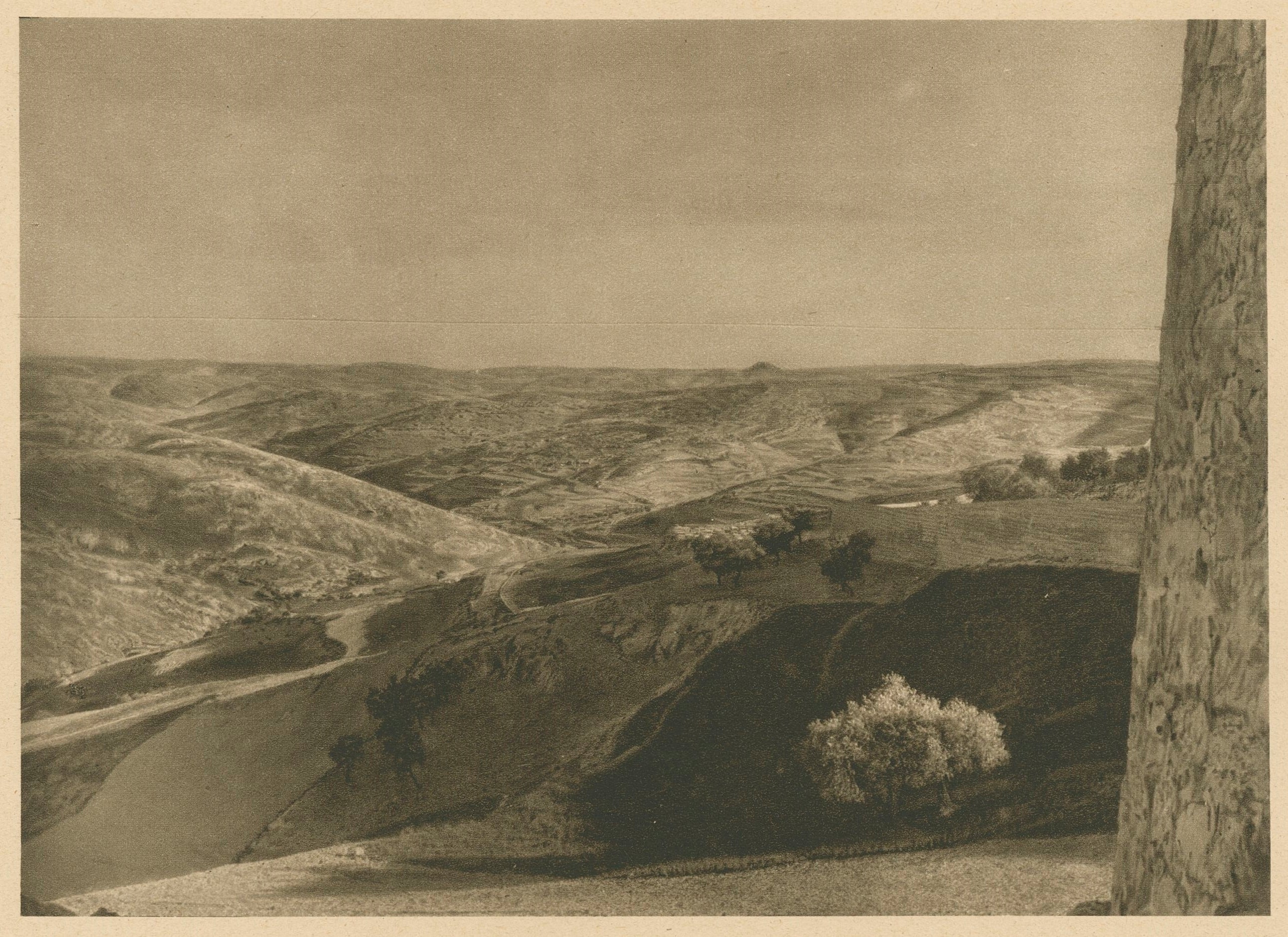
View of Bethlehem from the Mount of Olives, Jerusalem.
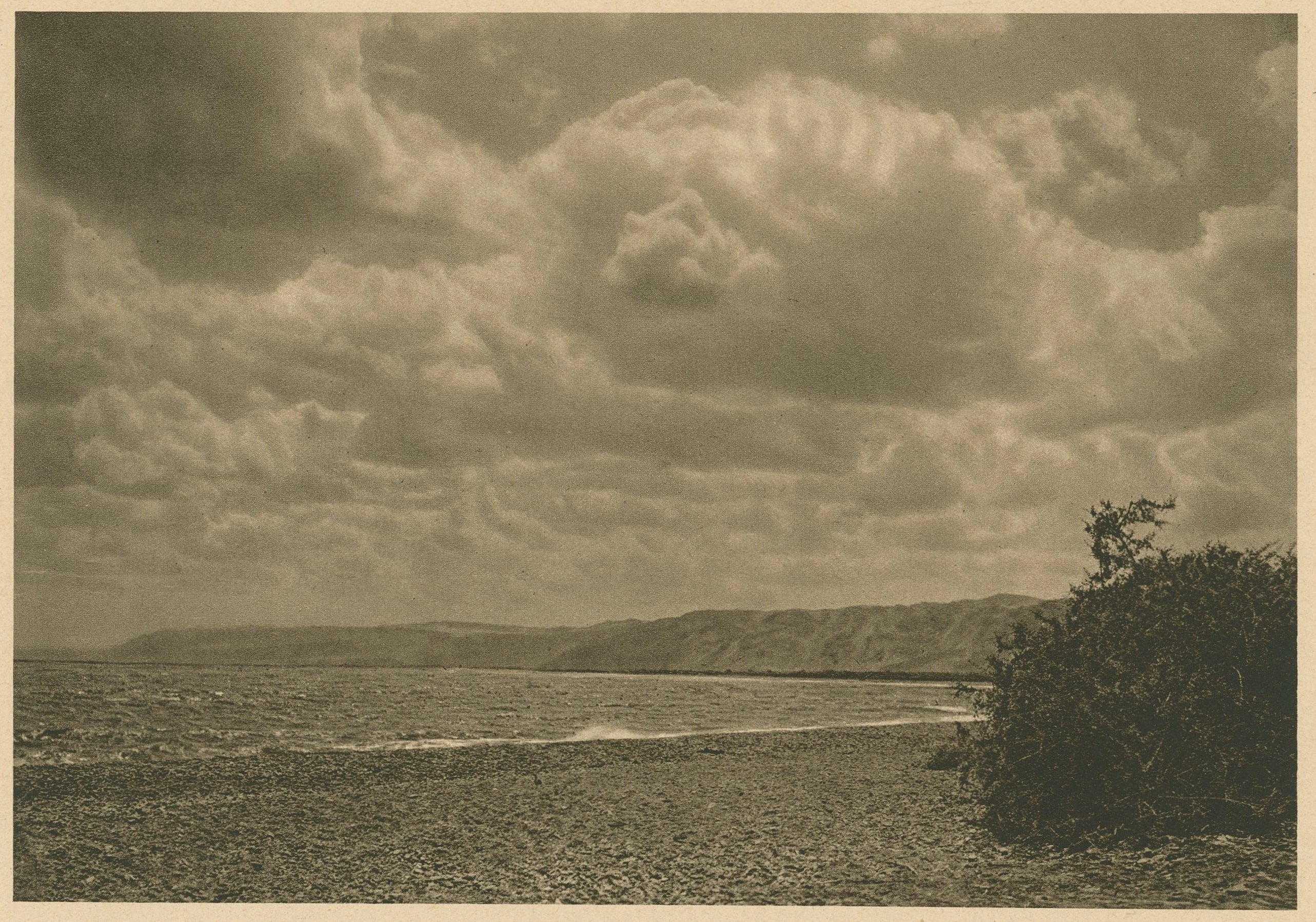
The Dead Sea, bordering Palestine and Jordan.
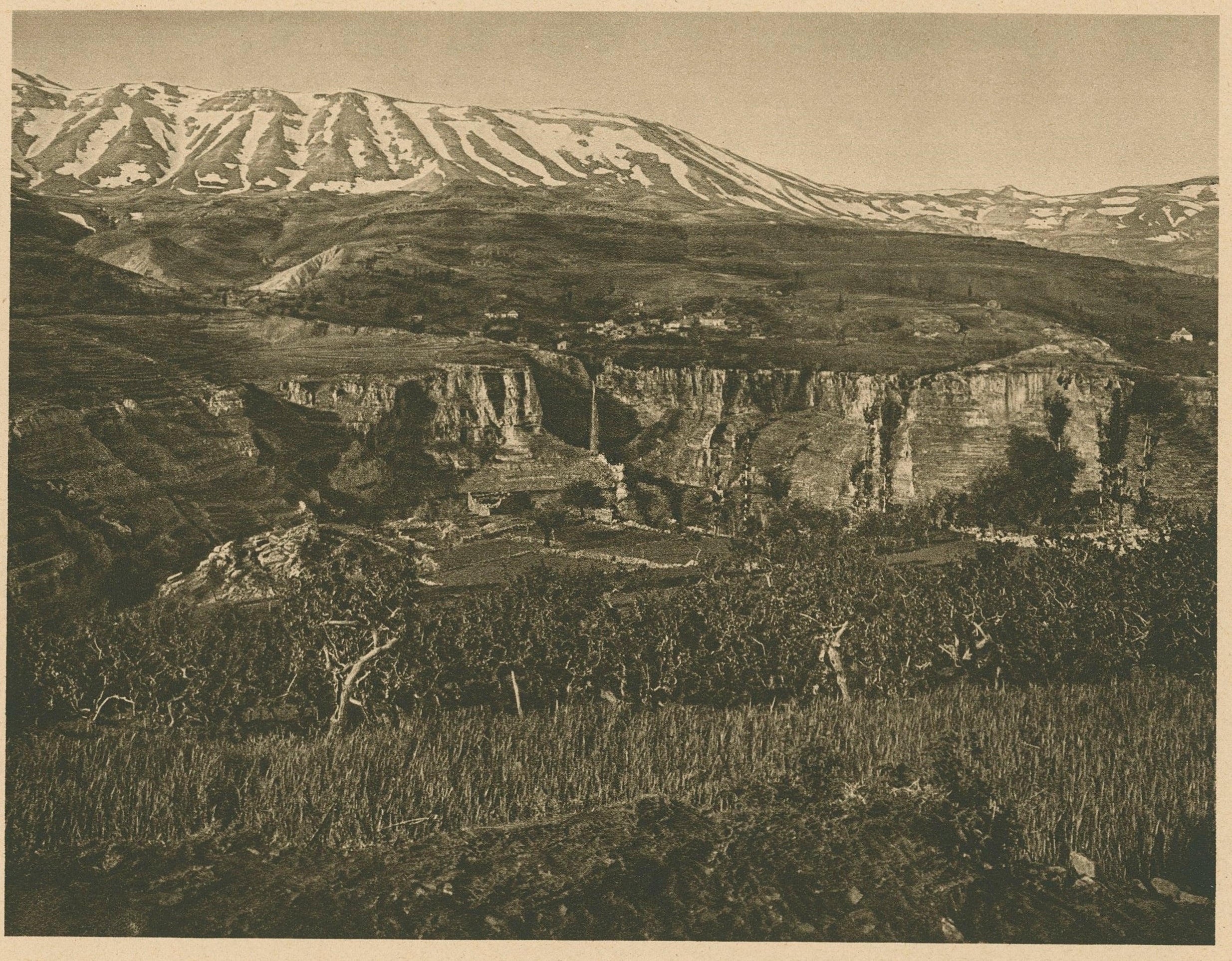
Landscape of mountains in Lebanon.
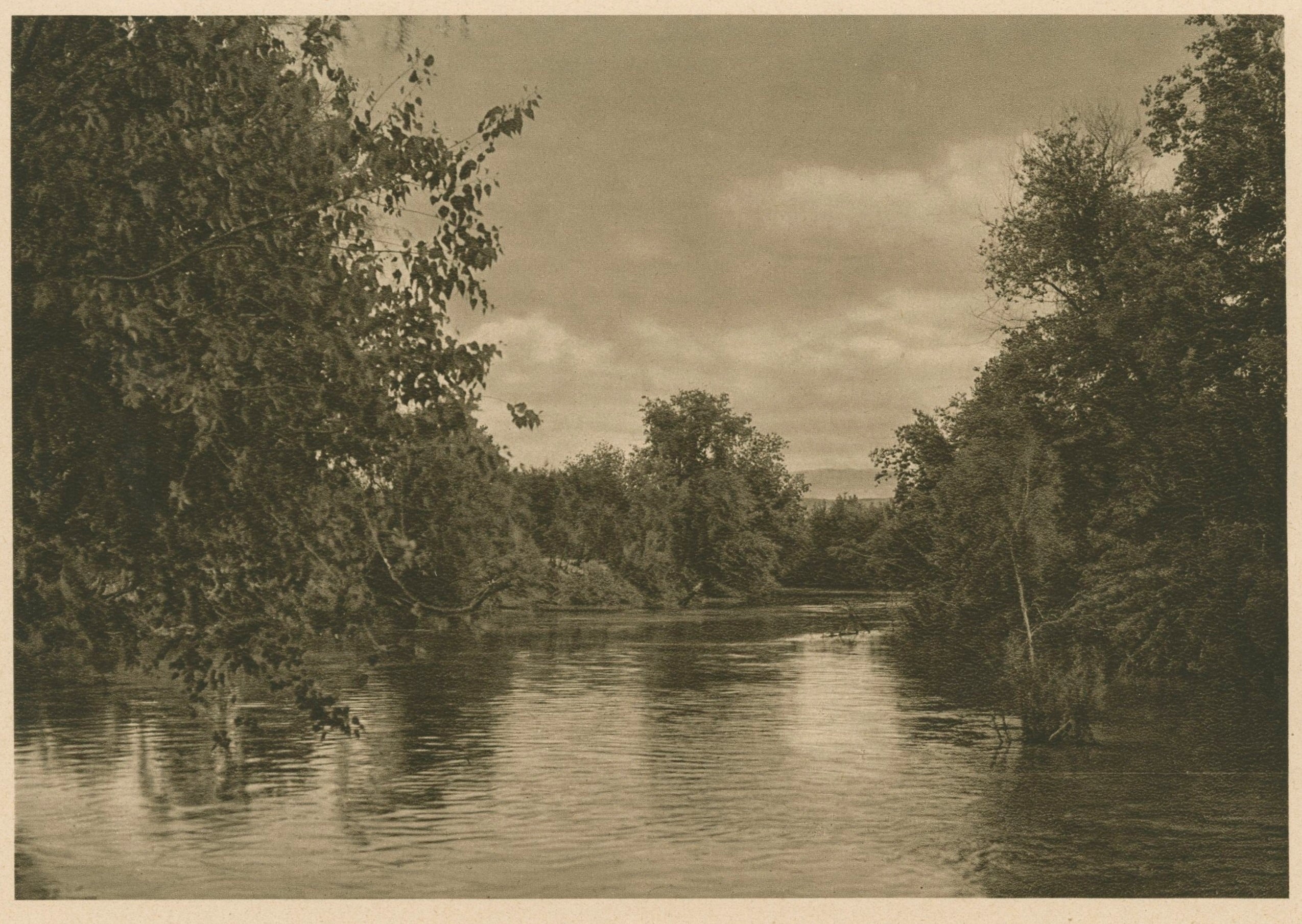
The Jordan River, which flows through the Sea of Galilee and on to the Dead Sea
Another interesting piece that was found was of an old daily Syrian newspaper titled Al-Hoda (The Guidance). It was written entirely in Arabic and was published in 1898 on a bi-weekly basis by Naoum Anthony Mokarzel, a Maronite Lebanese immigrant to Philadelphia. The paper then moved to New York City in 1902, where it became a daily. This was one of the first Arabic language newspapers in the United States and was the first to use Arabic character linotype rather than hand-setting. Mokarzel remained owner and chief editor of this paper until his death in 1932. Publications stopped in September 1972. This issue of Al-Hoda includes two letters dedicated to Syria, a news update on Russia, and a number of advertisements for businesses selling clothing, medicine, food, carpets, and hygiene products.
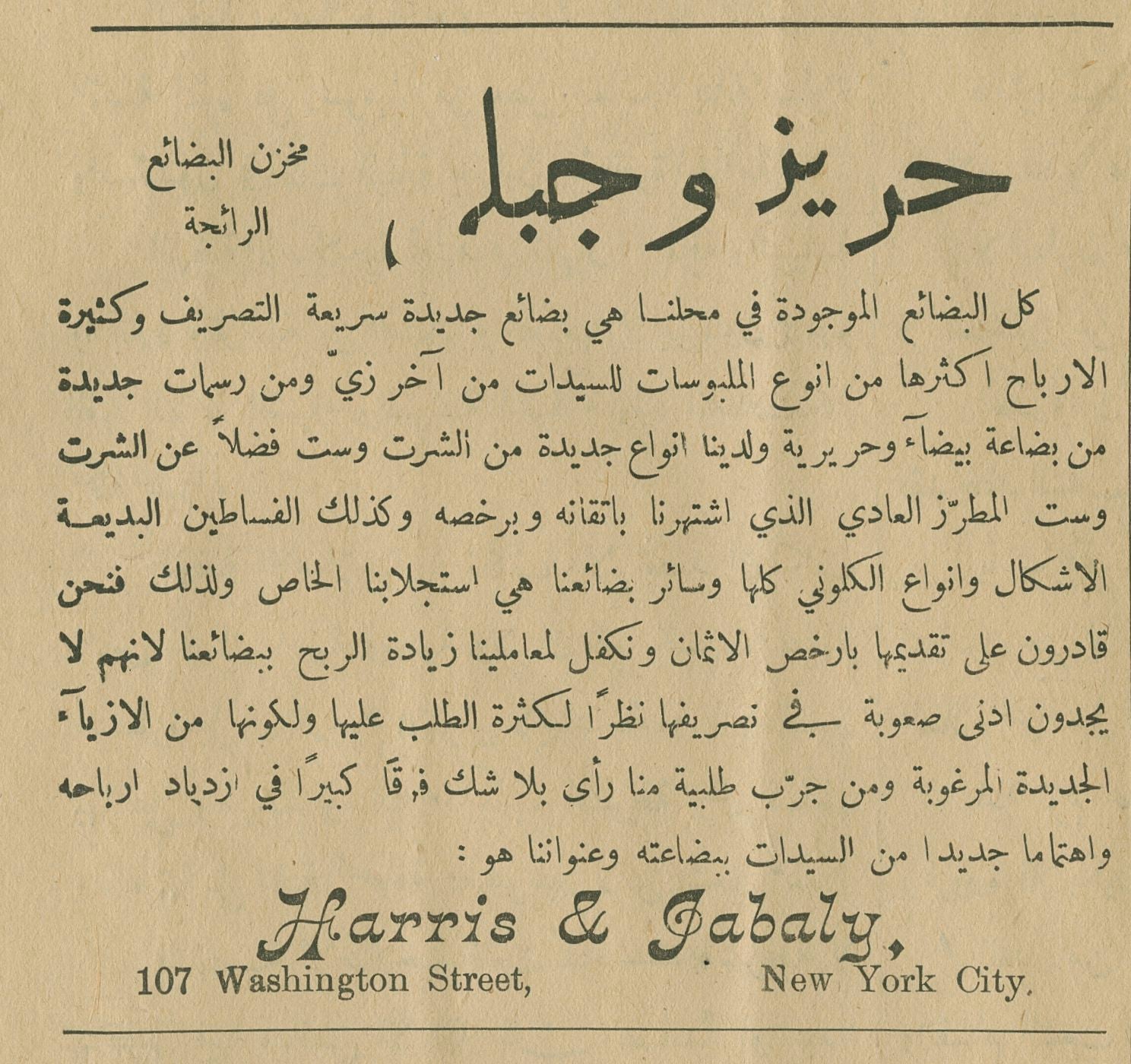 Here is an example of a clothing business ad in Arabic (my translation):
Here is an example of a clothing business ad in Arabic (my translation):
“Harris & Jabaly, Popular Goods Store
All goods available at our store are a new collection with quick discharge and high profits our goods are mostly women's clothing of the latest design and from new drawings made from silky white material and we have a new kind of short waist aside from regular embroidered short waist which we became famous for perfecting it and selling it cheap as well as the elegant dresses and all kinds of tights and we import our own merchandise and thanks to that we are able to sell it at a lower price and guarantee our workers extra profit from our goods because they don’t find difficulties in selling it due to the excessive amount of orders for this particular piece because it is a new and wanted design and we noticed without a doubt a huge difference in our profit increase and new interests of women for this product and our address is: Harris & Jabaly 107 Washington Street, New York City.”




